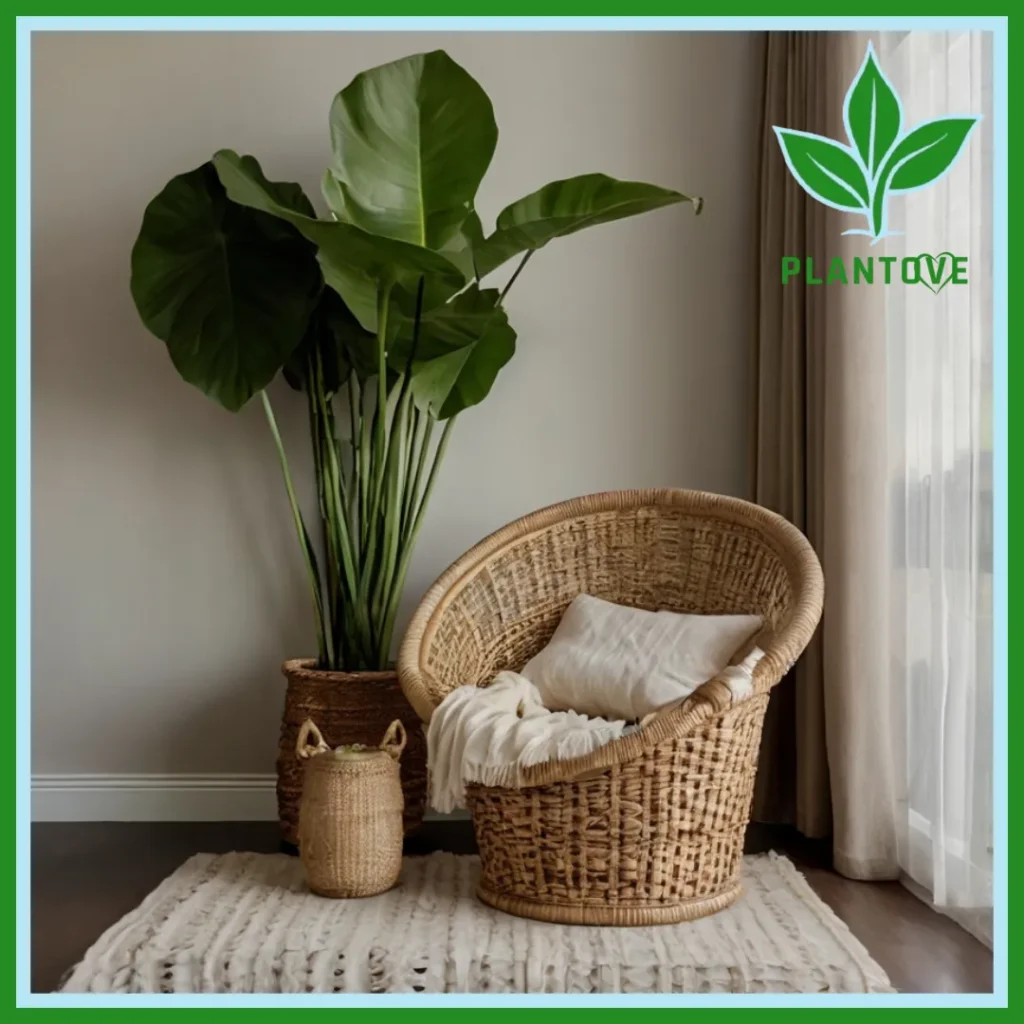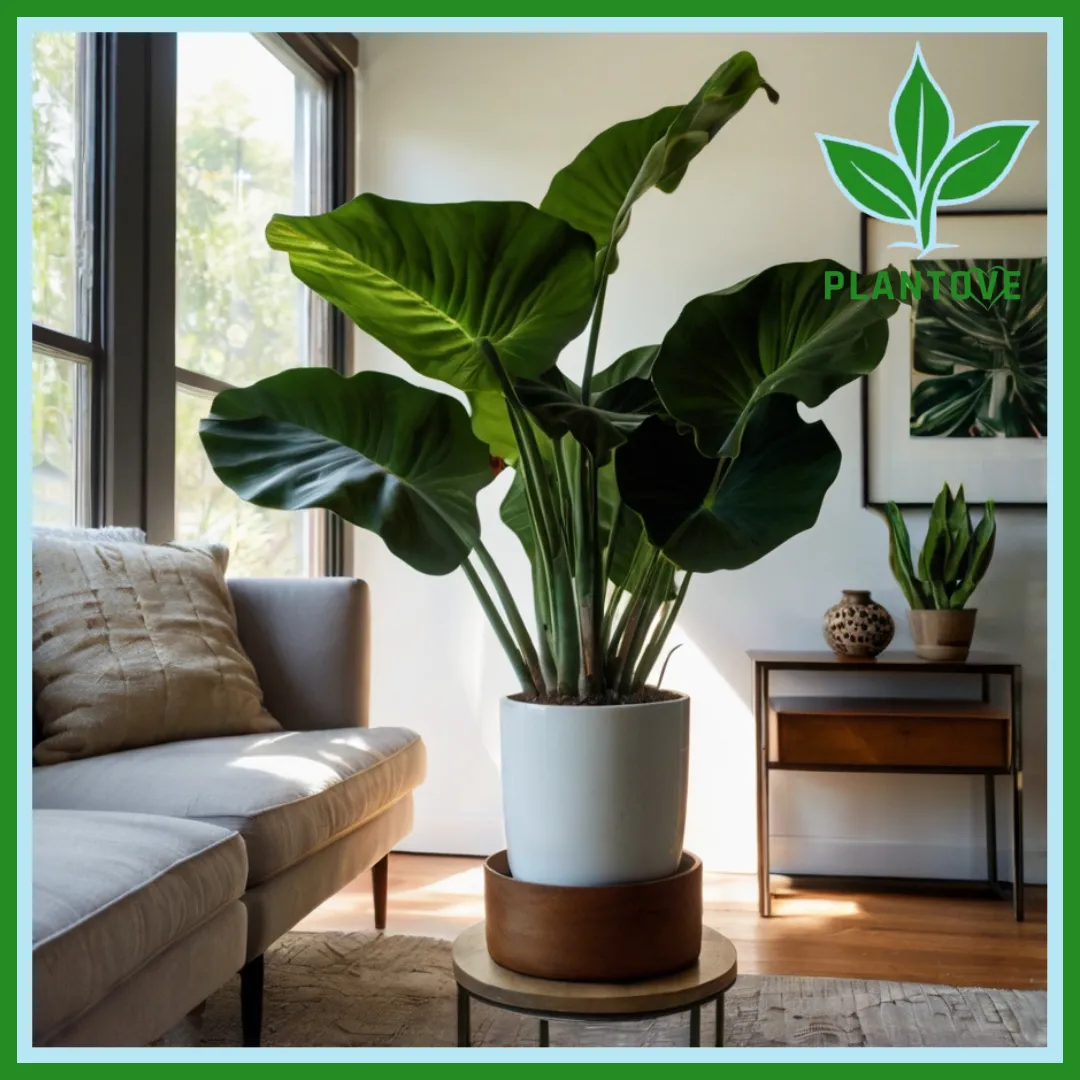The Elephant Ear plant (Colocasia) is renowned for its dramatic, large, and heart-shaped leaves that bring a touch of the tropics into any space. While these plants are commonly associated with outdoor gardens, they can also thrive indoors with the right care and conditions. In this guide, we will explore the essentials of growing and maintaining Elephant Ear plants indoors, highlighting their benefits, care requirements, and styling tips to make the most of their striking foliage.
What is the Elephant Ear Plant?
Elephant Ear plants belong to the Araceae family and are known for their oversized, lush leaves that can resemble an elephant’s ear. The scientific name for these plants includes several species, such as Colocasia esculenta, Alocasia macrorrhiza, and Xanthosoma sagittifolium. They are native to tropical regions and are celebrated for their bold appearance and rapid growth.
Types of Elephant Ear Plants Suitable for Indoor Growth
Several types of Elephant Ear plants can adapt to indoor conditions:
- Colocasia esculenta (Taro): Known for its large, rounded leaves and edible tubers, this variety is popular for both its ornamental and culinary uses.
- Alocasia amazonica: This plant features glossy, dark green leaves with prominent veins, making it a stylish choice for indoor decor.
- Alocasia Polly (African Mask Plant): With its unique, arrow-shaped leaves and striking patterns, this variety adds a dramatic flair to any room.
- Xanthosoma sagittifolium: Often called the Arrowleaf Elephant Ear, this type has distinctive arrow-shaped leaves and thrives in bright indoor environments.
Benefits of Growing Elephant Ear Plants Indoors
Elephant Ear plants offer several benefits when grown indoors:
- Aesthetic Appeal: Their large, lush leaves can transform any room into a tropical oasis, adding visual interest and a touch of exotic elegance.
- Improved Air Quality: Like many houseplants, Elephant Ear plants can help improve indoor air quality by filtering out toxins and increasing humidity.
- Low Maintenance: Once established, Elephant Ear plants are relatively easy to care for, making them a great choice for both novice and experienced plant enthusiasts.
How to Grow Elephant Ear Plants Indoors

Ideal Conditions for Indoor Growth
Elephant Ear plants require specific conditions to thrive indoors:
- Light Requirements: These plants prefer bright, indirect light. Direct sunlight can scorch their leaves, while low light conditions can slow their growth. Place your plant near a window with filtered light or use grow lights if natural light is insufficient.
- Temperature and Humidity: Elephant Ear plants thrive in warm, humid environments. Maintain indoor temperatures between 65-80°F (18-27°C) and humidity levels of 50% or higher. Consider using a humidifier or placing the plant on a pebble tray filled with water to boost humidity.
- Soil and Potting: Use a well-draining, rich potting mix to prevent root rot. A mixture of peat moss, perlite, and compost works well. Ensure the pot has drainage holes to allow excess water to escape.
Planting and Transplanting
When planting Elephant Ear plants indoors, follow these steps:
- Choose the Right Pot: Select a pot that is 2-3 inches larger in diameter than the current root ball. Ensure it has drainage holes to prevent waterlogging.
- Prepare the Soil: Fill the pot with the prepared potting mix, leaving enough space at the top for watering.
- Planting: Gently remove the plant from its nursery pot and place it in the new pot. Fill in around the root ball with soil and water thoroughly.
- Transplanting: Repot the plant every 1-2 years or when it outgrows its container. Choose a slightly larger pot and refresh the soil to provide ample space for growth.
Elephant Ear Plant Care Indoors
Watering
Elephant Ear plants require consistent moisture, but overwatering can lead to root rot. Follow these watering guidelines:
- Frequency: Water when the top 1-2 inches of soil feel dry to the touch. During the growing season (spring and summer), you may need to water more frequently.
- Method: Water thoroughly until excess water drains from the bottom of the pot. Avoid letting the plant sit in standing water.
Fertilizing
Feed your Elephant Ear plant with a balanced, water-soluble fertilizer every 4-6 weeks during the growing season. Use a fertilizer with equal parts nitrogen, phosphorus, and potassium (e.g., 10-10-10) to support healthy growth.
Pruning
Regular pruning helps maintain the plant’s appearance and health:
- Removing Dead Leaves: Trim any yellowing or brown leaves at the base to encourage new growth and prevent potential diseases.
- Shaping: If the plant becomes leggy or overgrown, prune back the stems to maintain a compact shape.
Pest Control
Common pests that may affect Elephant Ear plants include spider mites, aphids, and mealybugs. Address pest issues with these methods:
- Inspection: Regularly check the undersides of leaves for pests.
- Treatment: Use insecticidal soap, neem oil, or a mixture of water and mild dish soap to treat infestations. For severe cases, consider systemic insecticides.
Styling Your Elephant Ear Plants Indoors
Display Ideas
Incorporate your Elephant Ear plant into your indoor decor with these creative ideas:
- Floor Plant: Place the plant in a decorative pot on the floor to create a dramatic focal point.
- Plant Stand: Use a plant stand or pedestal to elevate the plant and add visual interest to your space.
- Hanging Planter: For a unique look, consider using a hanging planter or macramé hanger to showcase the plant’s trailing or upright growth.
Combining Plants
Pair Elephant Ear plants with other indoor plants to create a lush, tropical display. Consider grouping them with:
- Ferns: Their feathery foliage complements the bold leaves of Elephant Ears.
- Pothos: The trailing vines of Pothos provide a nice contrast to the large, upright leaves of Elephant Ears.
- Peace Lilies: The elegant white flowers of Peace Lilies can enhance the tropical theme.
DIY Projects for Elephant Ear Plants
Macramé Plant Hangers
Create a stylish macramé plant hanger to showcase your Elephant Ear plant:
- Materials: Use cotton or jute rope and a wooden or metal ring.
- Instructions: Follow online tutorials to learn basic macramé knots and techniques. Customize the hanger to fit your plant’s pot size and desired length.
Upcycling Plant Containers
Transform everyday items into unique plant containers:
- Teacups: Use vintage teacups or mugs as charming plant pots.
- Wooden Crates: Repurpose wooden crates or boxes for a rustic, farmhouse look.
- Glass Jars: Turn glass jars into mini plant terrariums or decorative pots.
Troubleshooting Common Issues
Yellowing Leaves
Yellowing leaves can indicate several issues:
- Overwatering: Ensure proper drainage and adjust watering frequency.
- Nutrient Deficiency: Fertilize regularly to provide essential nutrients.
- Low Light: Move the plant to a brighter location or use grow lights.
Brown Leaf Tips
Brown tips may result from:
- Low Humidity: Increase humidity around the plant with a humidifier or pebble tray.
- Fluctuating Temperatures: Avoid placing the plant near drafts or heating vents.
Root Rot
Root rot is caused by excessive moisture:
- Diagnosis: Check for mushy or darkened roots.
- Treatment: Remove affected roots, adjust watering practices, and repot in fresh soil.
Conclusion
Elephant Ear plants bring a touch of tropical elegance to indoor spaces with their dramatic foliage and bold presence. By providing the right care and conditions, you can enjoy the beauty of these plants throughout the year. From choosing the perfect variety to styling and troubleshooting, this guide covers everything you need to know to successfully grow and maintain your Elephant Ear plant indoors. Embrace the lush, vibrant look of Elephant Ears and elevate your home decor with these stunning, versatile plants.

